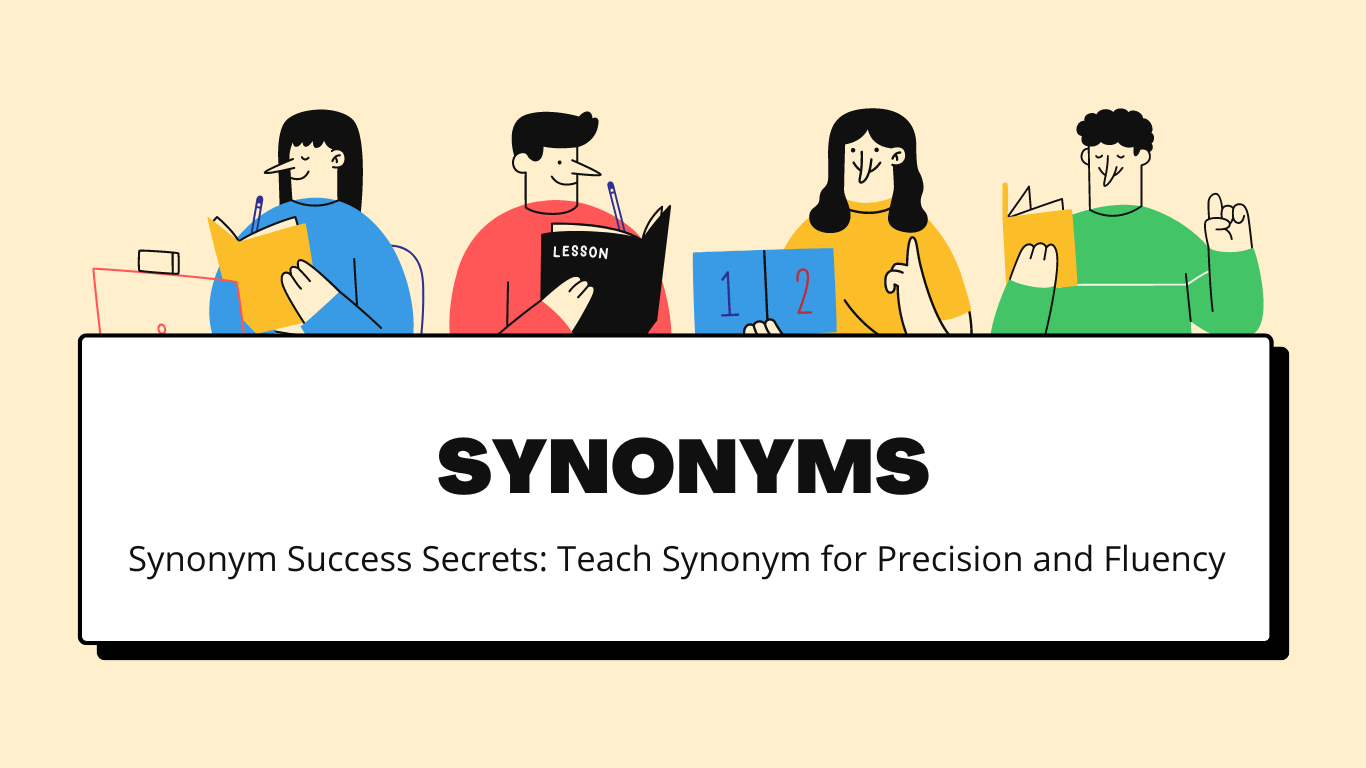Introduction
Welcome to a comprehensive guide on unlocking the power of synonyms for teaching precision and fluency in language. In this article, we delve into the strategies, benefits, and nuances of teaching synonyms effectively. Synonyms play a pivotal role in enriching vocabulary, improving communication, and fostering creativity. By understanding the secrets behind successful synonym instruction, you’ll be equipped to empower learners with the tools to communicate with finesse and accuracy.
Synonym Success Secrets: Teaching for Precision and Fluency
Synonyms are more than just words with similar meanings; they are linguistic gems that enhance the tapestry of language. Teaching synonyms effectively requires an understanding of their nuances, cognitive processes, and strategic approaches. In the following sections, we’ll explore the secrets to teaching synonyms for precision and fluency.
Benefits of Embracing Synonyms in Education
Synonym-rich education offers a multitude of benefits. By expanding students’ vocabulary, they become adept at selecting the perfect word to convey their thoughts. This fosters clarity, depth, and nuance in their communication. Moreover, as learners explore synonyms, their cognitive flexibility improves, enabling them to grasp concepts more readily and think critically. Through this multifaceted approach, students cultivate confidence and eloquence in both written and spoken language.
Strategies for Successful Synonym Instruction
- Contextual Learning: Immersion in Meaningful Sentences
- Incorporate synonyms into sentences and paragraphs to provide contextual understanding.
- Encourage learners to identify synonyms based on their application in different scenarios.
- Visual Aids and Games: Engaging and Interactive Learning
- Utilize visual aids like word webs and charts to visualize synonym relationships.
- Gamify learning with interactive synonym puzzles and quizzes, making education enjoyable.
- Thematic Approaches: Relating Synonyms to Real-world Concepts
- Teach synonyms within specific themes or subjects, allowing learners to associate synonyms with concrete contexts.
- Develop thematic word banks to facilitate exploration and application.
Nurturing Active Synonym Usage
- Writing Exercises: Crafting with Precision
- Guide students to craft sentences and stories employing synonyms.
- Emphasize peer reviews to create a collaborative learning environment.
- Oral Communication Practice: Building Fluency and Confidence
- Engage learners in role-playing activities that involve using synonyms in conversations.
- Encourage debates and discussions where synonym choice enhances argumentation.
Overcoming Teaching Challenges
- Differentiating Synonyms: Grasping Subtle Nuances
- Provide examples to elucidate subtle differences between synonyms.
- Clarify distinctions through relatable scenarios to alleviate confusion.
- Integration into Vernacular: Bridging Learning and Application
- Scaffold gradual integration of learned synonyms into everyday language.
- Inspire learners to embrace synonyms as tools for precise expression.
Frequently Asked Questions
- What exactly are synonyms, and why are they important for language learning?
Synonyms are words with similar meanings. They’re vital as they enable varied expression, deepen understanding, and enhance communication impact. - How can teaching synonyms benefit language learners?
Teaching synonyms improves vocabulary, nurtures cognitive flexibility, and enhances learners’ ability to choose the right words for different contexts. - What are effective strategies for teaching synonyms?
Strategies include contextual learning, visual aids, games, and thematic approaches. These methods engage learners and facilitate deeper understanding. - How can teachers encourage active synonym usage?
Teachers can use writing exercises and oral communication activities to foster practical application of synonyms in both written and spoken communication. - What challenges might teachers face when teaching synonyms?
Differentiating between synonyms with subtle differences and integrating them naturally into students’ vernacular can pose challenges. However, proper strategies can address these issues effectively. - Can synonyms be culturally sensitive?
Yes, synonyms can have cultural nuances. It’s important to highlight cultural variations and promote cross-cultural awareness when teaching synonyms.
Conclusion
Synonym Success Secrets: Teaching for Precision and Fluency equips educators with invaluable strategies to enhance language education. By immersing students in synonym-rich environments, employing interactive techniques, and addressing challenges, teachers empower learners to communicate with eloquence and finesse. Synonyms, the unsung heroes of language, offer a gateway to effective communication and enriched expression.
============================================
